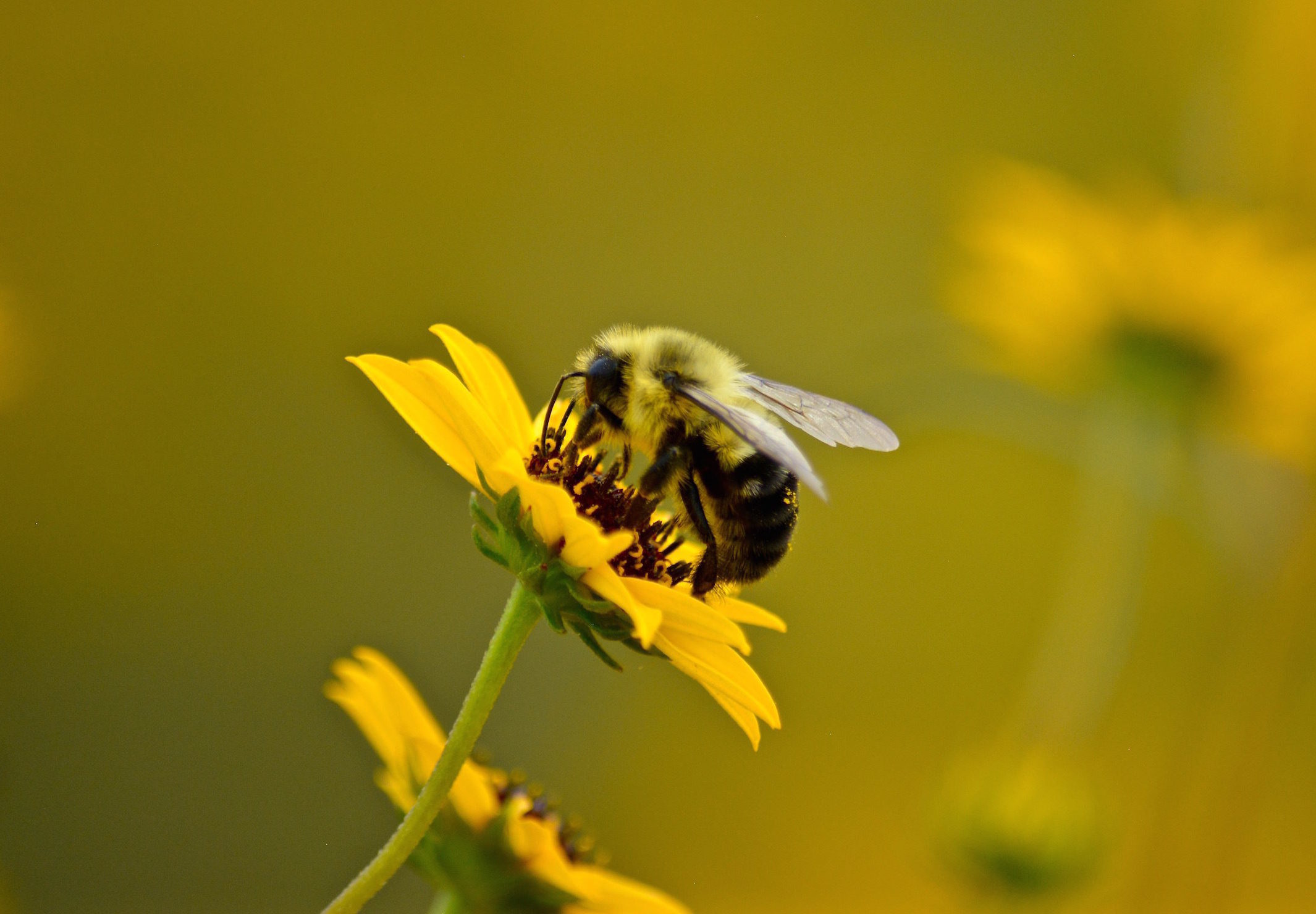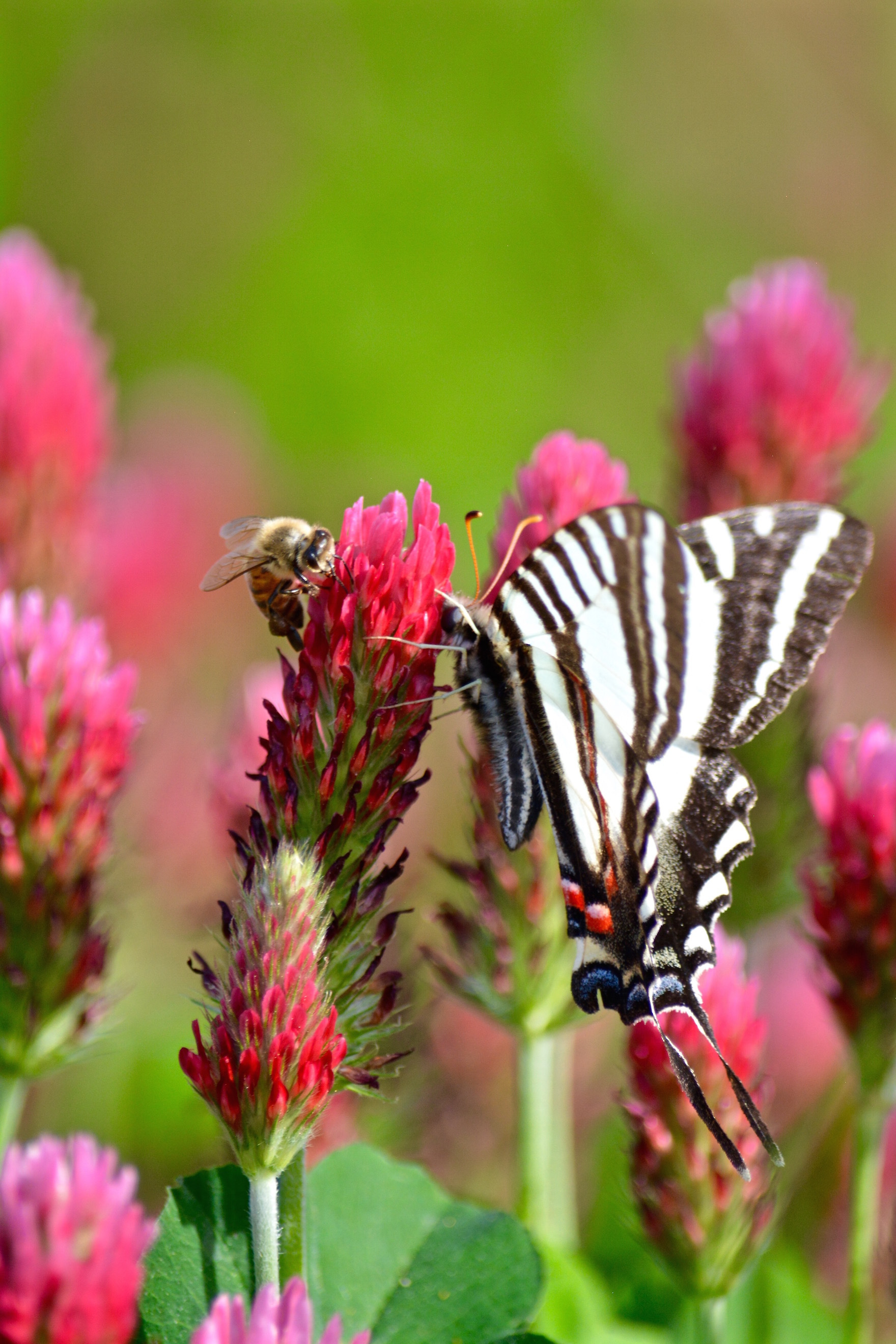Pollinators and People: Building Connections for Improved Conservation
By Shannon M. Westlake, PhD
By now, we all know that pollinators are facing several threats, from habitat loss and increased chemical use to parasites and climate change. There have been numerous studies showing population declines and potential consequences of large-scale pollinator loss with one conclusion being repeatedly drawn: We know enough to act now. So why have the masses not become more involved? One simple answer to that question is we might not know the masses well enough. To further pollinator conservation efforts, we need to research people themselves.
Bumble bee, photo by Shannon Westlake

Human Dimensions
There is a subfield in conservation research called conservation social science, which can include studies into human dimensions. Put simply, human dimensions research involves studying aspects of people, such as their attitudes, values, and beliefs, and how they relate to things such as wildlife or natural resources. Through these studies, we can better understand a person’s motivations or intentions to act, which can be key for pollinator conservation efforts. For example, over the past few years, I conducted a human dimensions study of landowners in Mississippi to understand their use of pollinator best management practices (BMPs) as well as their attitudes toward, knowledge of, and constraints from using these BMPs in the future.
Halictus sweat bee, photo by Shannon Westlake
One of the main things I learned from my study was that the respondents felt constrained from using pollinator BMPs, such as using cover crops, planting field borders, and using targeted herbicides. Their responses indicated they felt they did not have the skills, resources, or time to use these practices. They also indicated they did not have adequate knowledge to use them. This finding may seem surprising because there have been steady increases in messaging and conservation efforts focused on pollinators. However, having awareness is not the same as having knowledge. Overall, the survey respondents had more favorable than unfavorable attitudes toward pollinator BMPs and felt social pressures from others to use them, which means there is an opportunity to get people more involved.
Steps to Increasing Involvement
How do we get more people involved with pollinator conservation? I suppose that is the million-dollar question right now. I believe the answer lies with better understanding people and their relationships to pollinators and the BMPs that will support them. There are two steps we can take to start better supporting private landowners right now:
- Develop targeted messaging that includes information about pollinator BMP costs, multiple benefits, and implementation details.
- Provide more hands-on workshop opportunities where people can observe demonstration areas, practice skills themselves, and connect with others interested in pollinator conservation.
These steps would allow for improved familiarity, knowledge, and skills for using pollinator BMPs, which will be essential for increased and retained involvement from private landowners in the future.
Gardening, photo by Shannon Westlake
As human beings, we have basic needs to learn and grow, and we appreciate having a sense of community. These steps tap into those elements. People tend to take greater pride in things they were involved in creating, from small at-home projects to community structures and gardens. Their level of commitment deepens as they wish to experience continued success from their actions. Additionally, when you put a group of people together who are interested in a specific topic, like pollinator conservation, there is an incredible opportunity for discussions, learning, and connections. Because we are social creatures, group settings also help to change or strengthen social norms. To get more people involved with pollinator conservation efforts, we need to provide opportunities for them to feel more empowered and connected.
Building Connections
One surprising result from my research was the level of disconnection between landowners and sources of information. Specifically, I asked how often the respondent used various BMP publications and contacted individuals (e.g., County Extension agents, friends, and neighbors) for information about general land management practices. Most responses were “occasionally” or less, or they indicated they were unfamiliar with the publication resources. This can prove challenging when attempting to share information about BMPs or encourage involvement in outreach workshops; therefore, we need to work on developing ways to better reach landowners, especially in rural landscapes.
Field border of Solidago goldenrod, photo by Shannon Westlake
When designing my study, I wanted to make sure to include BMPs that had multiple benefits. For example, the pollinator BMPs I used in my survey are useful for creating foraging and nesting habitat and for reducing chemicals, but they also have additional environmental benefits. Landowners in my study may be using cover crops because they are having soil erosion issues, not because their motivation was to support pollinators. However, they may feel the practice has more value knowing it has multiple benefits, which may allow us to create a wider base of support among diverse landowners. Another prime example of this is landowners who are interested in supporting songbirds or gamebirds. Pollinators are an important part of the food chain, so their health and survival will directly impact other species of interest. This knowledge connection may be useful to secure more landowner support.
Improving Conservation
Pollinator health and their continued survival are linked to the health of the environment. Previous studies have confirmed this and provided recommendations of how people can get involved with pollinator conservation efforts. However, we are still lacking the amount of support we need to halt and reverse population and habitat declines. Our challenge is to modify and spread this message so that more people connect and respond, securing future support. By better understanding the people we are hoping to involve, we will be able to improve our pollinator conservation efforts for the benefit of all.
Honey bee and zebra swallowtail butterfly, photo by Shannon Westlake

For more information about her research, contact Shannon Westlake.